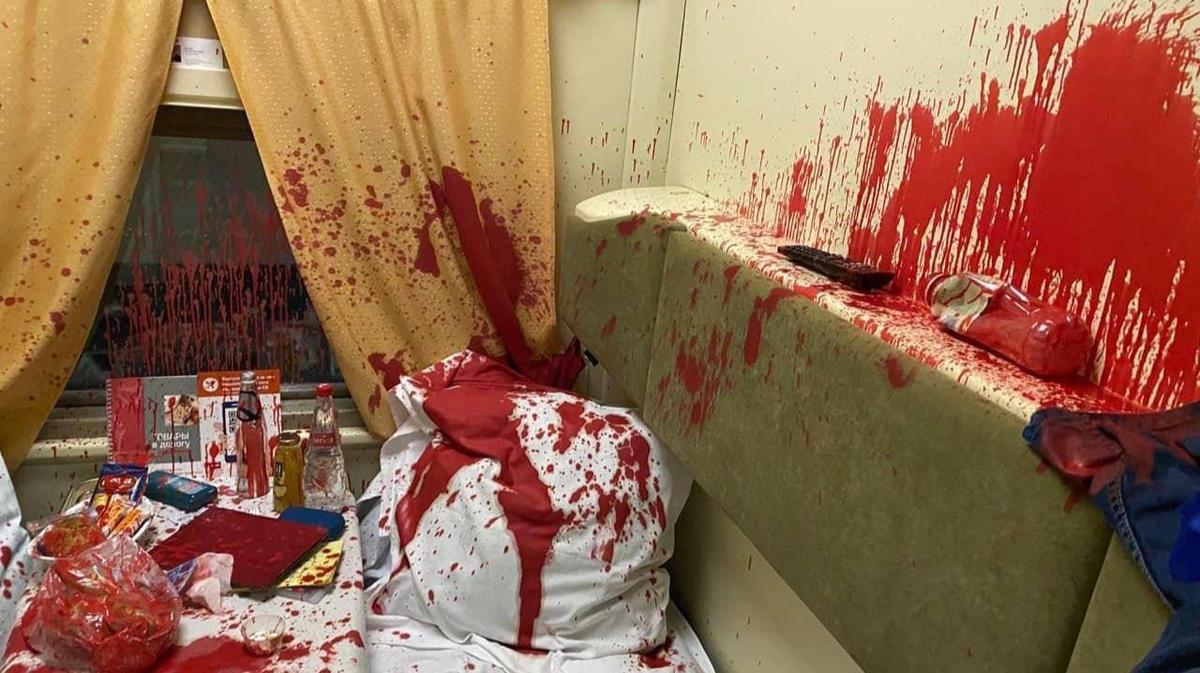This story was first published on the website of Novaya Gazeta. With our colleagues’ permission, we publish it here.
‘All the signs of hooliganism’
It has been three months since the attack on the Novaya Gazeta Editor-in-Chief Dmitry Muratov. On 7 April, an unidentified person approached Muratov in the car of a Moscow-Samara train at the Moscow Kazansky railway station. With a cry “For our boys!”, the assailant spilled a mixture of red paint and acetone on Muratov. After a few minutes, the video of the attack filmed by the second assailant appeared on several Telegram channels. Muratov’s eyes suffered a chemical burn, all the passengers had to be moved to another car due to the smell of acetone, while the train was delayed an hour, which affected the entire station’s schedule. In other words, an act with severe consequences, cynically conducted at a high-risk object — this is how the attack would be described by law enforcement officers.
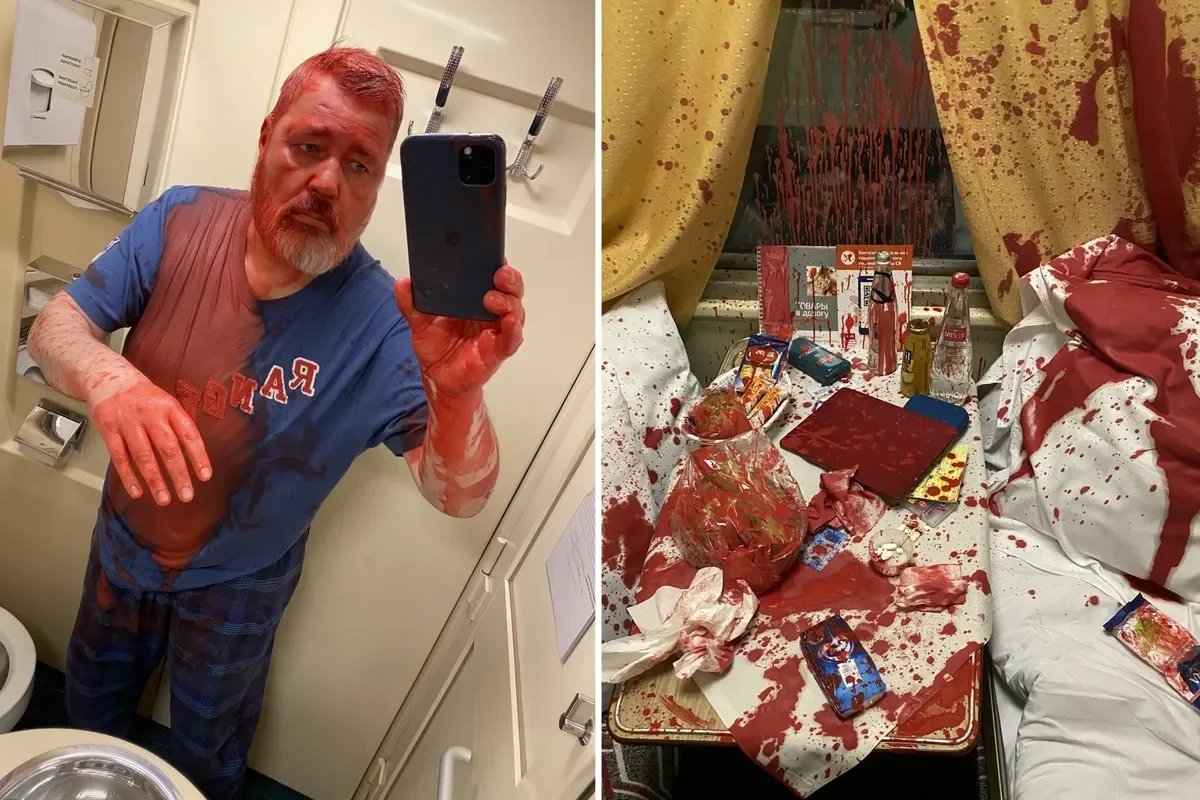
Novaya Gazeta Editor-in-Chief and Nobel Peace Prize recipient Dmitry Muratov after the attack. On the right: Muratov’s train car, the number of which was known by one of the assailants. Photo: Dmitry Muratov / Novaya Gazeta
Everything was perfectly arranged for an arrest, too:
in addition to witnesses, who recalled the attack in great detail, and the fact that a policeman was holding the passport of one of the alleged suspects in his hands mere minutes after the incident (the man was stopped right at the platform), the police had the footage from 700 security cameras installed in the station at their disposal — that is the exact number that a police newspaper Petrovka, 38 referred to three years ago. Since 2017, Moscow’s railway stations have been equipped with face recognition security cameras. In the last few years, Moscow railway has spent tens of millions rubles on their installation, modernisation, and software.
And the system works — we can confirm that this footage was studied, as is the procedure, right at the station in the first hours after the attack. And then — nothing.
Although the police are usually very quick to — even with a complete lack of witnesses — detain people who, for example, dared to somehow defile the Z symbol, with their only proof of wrongdoing being the grainy footage from security cameras.
It was the security camera footage that was the key piece of evidence against Sasha Skochilenko, the woman arrested for allegedly putting anti-war leaflets in place of price tags in a supermarket.
One could argue that there is a difference between catching adversaries of the “special operation” and investigating criminal deeds of zealous government supporters. However, the attackers were thrown under the bus both by the Russian Union of Airborne Forces, on behalf of which the assailants had been allegedly acting, and by ex-Commander-in-Chief of the Russian Airborne Troops Vladimir Shamanov — in an interview with his State Duma colleague Alexander Khinshtein he asked that the guilty be punished. Khinshtein, by the way, after discussing this issue with the Ministry of Internal Affairs, announced that a criminal case would soon be opened, seeing as “the Ministry of Internal Affairs sees all the signs of hooliganism in attackers’ actions”.
We are not going to guess what was meant by the word “soon”; we do, however, think that the State Duma deputy might want to ask his ministry interlocutors how long he is going to be kept waiting.
Meanwhile, in reply to our request,
the acting head of the Central Federal District Main Directorate for Transport Infrastructure Mr Budtsov informed us that the initial inquiry into the attack was still ongoing, and no decision “has been made as of now”. The answer, in fact, was not even dated; we received it a month after the request.
Even though according to the Russian Federal Law “On Media”, media requests should be answered within seven days. Mr Budtsov’s employee Mrs Iovleva, the head of the Transport Unit Investigations at the Moskva-Ryazanskaya station, which is responsible for the Kazansky railway station, refused to answer Novaya Gazeta’s official request at all, saying that we were not participants of the committed wrongful act.
These comments gave us an answer (a negative one) to only one of the questions we had posed — about the criminal case being opened. By the way, according to the law, the decision on whether a criminal case should or should not be opened is supposed to be made within three days, in case there are serious grounds for a delay, the deadline can be extended to 30 days. It has been three months.
We were also interested in these questions: which exact steps did the police take to immediately determine the circumstances and suspects of the wrongful act, were the alleged assailants detained, were the owners of the Telegram channel that had instantly published the video of the attack and added their own approving comment investigated in connection with the crime? And most importantly, how exactly did the unidentified attackers receive access to the confidential information of the Russian Railways company — both the ticket information and the passenger’s personal data?
Firstly, the answer to the last question could shed light on possible accomplices and initiators of the intimidation act, and secondly, the lack of an answer casts doubt on the entire transport safety system.
If a couple of thugs can easily get access to confidential data, then how does the data protection system work? What other crimes, down to terrorist attacks, could this easy access provoke?
Having not received answers from the law enforcement, we are compelled to continue our own investigation and publish its results, expecting that the information we have acquired will be reviewed according to procedural norms.
We have previously talked about the alleged assailants. Neither the law enforcement, nor the people we had named refuted our story. Currently, both of these men are free and not considered to be wanted persons. We have found out additional details about them, which are not letting us presume that these are two loner freaks, running around Moscow with bottles of paint for their own amusement. These two men are closely linked, they have contacts with nationalist and “patriotic” structures, and also, special forces. At least one of them has criminal experience, too.
‘I know a guy from FSB’
At the end of April, The Washington Post and The New York Times, citing unnamed US officials, reported that the attack on Muratov had allegedly been “the handiwork of Russian intelligence”. One can only guess which exact government agency was being implied. Meanwhile, Novaya Gazeta found out that one of the alleged assailants has in fact been in contact with Russian security services since 2010 — to be precise, with the Federal Security Service (FSB).
The man is Nikolay Triphonov, a member of a nationalist movement, connected to the Russian Union of Airborne Forces and other veteran organisations. While studying at the Moscow State University (MSU), he founded a combat veteran organisation Otvaga (Valour), which was later included in MSU’s Combat Brotherhood. In 2011, he was elected to the central council of the Union of Airborne Forces. A reminder: this organisation is connected to the Telegram channel SoyuZ desantnikov (Ze Union of Airborne Forces) that was the first to publish the video of the attack, with the comment “We will come for every one of you”.
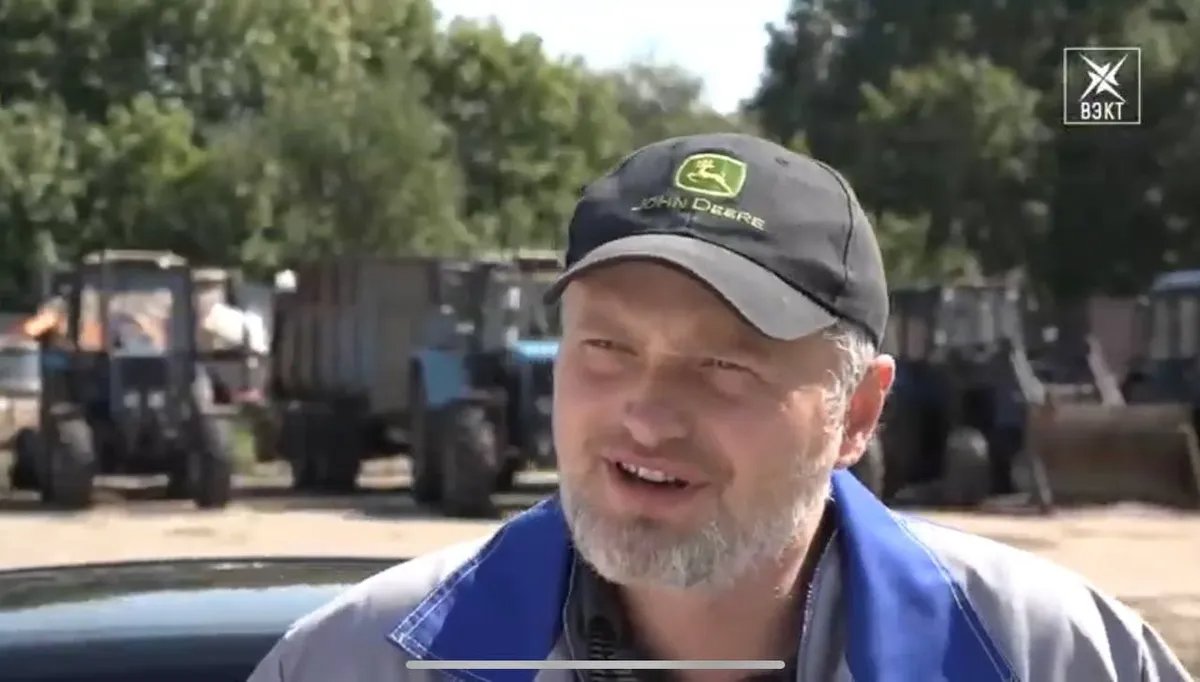
Nikolay Triphonov. Photo: Youtube screenshot
Despite the fact that the head of the union Mr Yuryev publicly denied any connection to both the attack and the Telegram channel, the channel was used as a backup for the posts of the union’s Instagram account — in the contacts of the Instagram page, there is the phone number of the Moscow department of the union. And the name of the channel matches the domain of the union’s site.
The Moscow police, according to our information, have still not verified whether the owners of the channel were somehow involved in the attack; meanwhile, the channel keeps posting threats addressed to Muratov. Another series of posts full of threats was posted after Muratov had sold his Nobel Peace Prize medal in support of UNICEF's humanitarian response for Ukrainian refugee children. Anonymous Z users promised retaliation for the humanitarian deed, while the channel’s commentators said that they need to “stock up on the paint”.
And once again, the police’s inaction is quite curious, considering how fast they file reports for reposts on the Internet, yet refuse to investigate appeals to commit a crime.
The comments under the post in the Telegram channel SoyuZ desantnikov. The last comment says: “[We] need to stock up on the paint”.
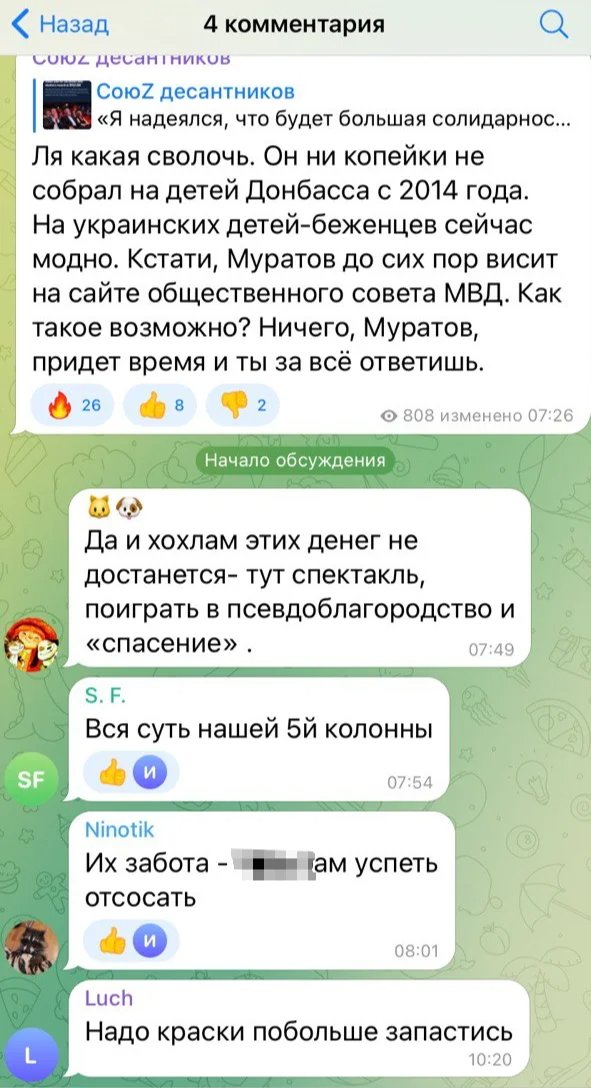
Photo: Screenshot
Let us go back to Nikolay Triphonov. According to Novaya’s information, during his time at the university, he joined an unregistered public organisation People's Militia named after Minin and Pozharsky, headed by ex-colonel of the Main Intelligence Directorate (GRU) Vladimir Kvachkov. In 2013, Kvachkov was sentenced to 13 years in a strict-regime penal colony for an attempted armed rebellion. Triphonov was a witness in that case and in his testimony said that, a month before Kvachkov’s arrest, Triphonov had met with two previously known to him FSB officials, one of whom as a high-level officer of the Protection of FSB’s Constitutional Order Department (Novaya has his last name). This department, among other things, oversees the work with the left and right movements, as well as fan structures.
It is curious that Igor Strelkov (Girkin) — the future commander of the “DPR” armed forces, — served in this same department, at the time supervising the work with the ultra-right forces.
How did an MSU student know a high-level FSB official remains a mystery, however, it is mentioned in Kvachkov’s sentence that it was through Triphonov that security officers tried to organise a meeting with the ex-colonel, seeing as “they did not want any blood to be shed”. Kvachkov’s lawyer, meanwhile, said that, during the investigation, Triphonov allegedly had told another version of events — that the FSB officials had warned him about the impending provocation against Kvachkov, which he had later told ex-colonel about, but Kvachkov had not paid attention to his words.
The court documents also state that Triphonov and several other members of the organisation spoke to the soldiers of the Kovrov district training centre in the capacity of representatives of the Moscow Combat Brotherhood. That military unit, according to Kvachkov’s plan, was allegedly supposed to take part in the rebellion.
Three Kalashnikovs in the trunk
A year after the court case, Triphonov ended up in Donbas. The documents lead us to believe that he was in the Donetsk region in April 2014, when the separatists occupied administration buildings in Donetsk and Luhansk, and later declared the formation of “DPR” and “LPR”.
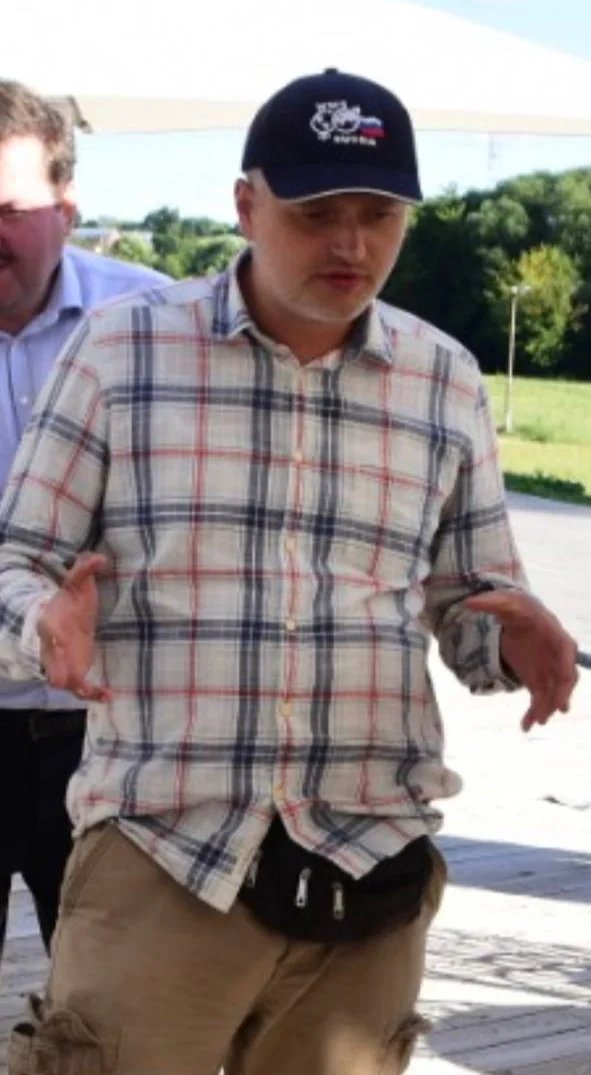
Nikolay Triphonov. Photo: screenshot from an open source video
In August 2014, the Kharkiv police submitted the results of radio intelligence to court, asking for access to the data of several dozen Russian and Ukrainian mobile phone numbers, allegedly belonging to people suspected of having taken part in illegal armed groups from April to June 2014. Among the Russian numbers there was Nikolay Triphonov’s one.
According to the phone numbers list, Konstantin Mirzoyants was there at the same time. Mirzoyants is an ex-commander of a special forces unit, he and colonel Pavel Popovskih (the founder of the Union of Airborne Forces), were persons of interest in the assassination of Russian journalist Dmitry Kholodov.
Among the owners of the phone numbers, there were: Alexander Borodai, previously chairman of the minister council of the self-proclaimed “DPR” and currently a State Duma deputy, several organisers and participants of pro-Russian demonstrations in Donetsk, employees of Russian state TV channels and public organisations, and retired Russian servicemen.
The radio intelligence data submitted to court showed that among the alleged separatists there were also a few people from the Russian volunteer fighter unit Iskra (Spark) that had been present in the “DPR”.
On 28 May 2016, a memorial plaque dedicated to the killed in Donbas was opened in the Trinity Lavra of St. Sergius monastery in the Moscow region village Glinkovo. It has 39 names on it — the fighters of the Iskra unit, killed during the early hours of 26 May 2014 during an attempt to occupy the Donetsk airport.
The main losses were suffered due to friendly fire — during the retreat, the unit was almost completely destroyed by the fire of other militiamen that had mistaken the Iskra unit soldiers for Ukrainian soldiers.
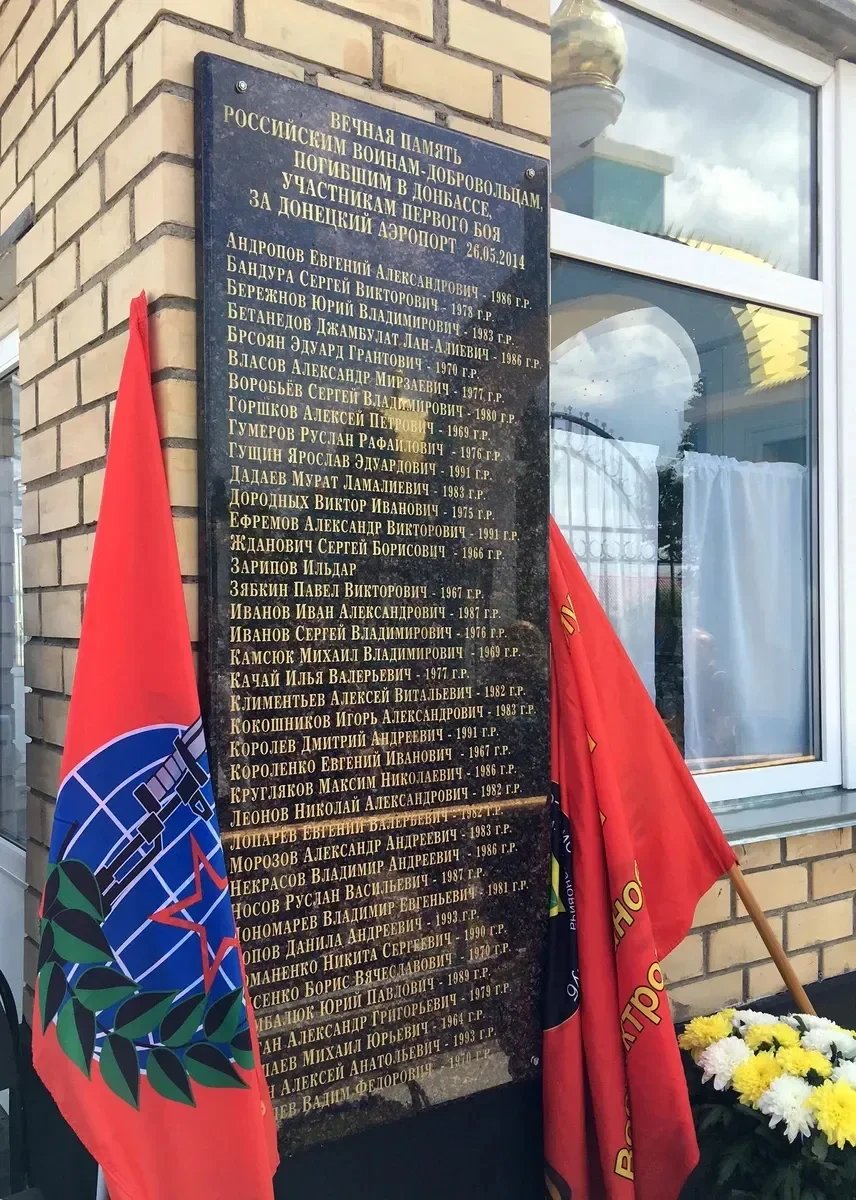
Memorial plaque dedicated to the killed during the failed Donetsk airport capture. Photo: Irek Murtazin / Novaya Gazeta
During the inauguration day, the plaque was covered with a Combat Brotherhood flag; the deputy head of the brotherhood, nowadays a State Duma deputy Dmitry Sablin sent a telegram to mark the occasion: “Russia has always had volunteer fighters. Whatever challenge our country is facing, there are always people prepared to step forward — that is the natural and only possible moral choice.”
According to the stories told by the fighters, the unit was gathered in Rostov; according to Novaya’s information, the unit was organised and sent to Donbas by the Combat Brotherhood. Ukrainian media thought that the Iskra unit allegedly worked under direct FSB command.
We suspect that Triphonov’s cousin Pavel Tikhonov, the co-founder of the MSU Union of Airborne Forces, a man that had previously been in combat — he had taken part in the Second Chechen War — was also a member of the Iskra unit. His profile matches that of a militiaman who fought in Donbas with a call sign Gora (Mountain); Borodai had called him a member of the Iskra unit.
Tikhonov has been tried, on his resume he writes that he works in the bank field, which is partly true: until 2014, he worked as collector, and was also the co-founder and CEO of the company Brio Finance. (At the beginning of 2019, the second founder, Vladislav Mishin, disappeared together with a billion rubles (€15.5 mln) of investors’ and private contributors’ money.)
According to Novaya’s information, in December 2014, Tikhonov and Triphonov flew from Rostov to Moscow together. It was at least a second Rostov visit for Triphonov — in June 2014, he was on the same flight as Denis Kovalenko, whose profile matches that of the Wagner Group fighter, as well as Yevgeny Frolov and Vladimir Komarichev, who, according to Ukraine, are members of illegal armed groups.
We have not been able to find reliable evidence that our suspect had personally partaken in combat in Donbas. But we did find a court sentence: in September 2015, traffic police stopped a car in the area of the Plaksino village, Moscow region; Triphonov was behind the wheel. During an inspection the police found three Kalashnikov rifles, replacement parts, three magazines, and 180 rounds of ammunition.
During questioning, Triphonov said that he had found the rifles in the forest nearby the village Rybkhoz, Ramenskiy district, and had been transferring them to later hide them closer to his house.
At first, the court put him under house arrest, later, at the beginning of 2016, sentenced him to one year of open prison.
‘There are a lot of retired soldiers here’
Airborne forces veterans, volunteer fighters, nationalists-provocateurs under FSB’s supervision — these are not the only connections that Triphonov has.
We have found out that, after the “Russian Spring” (pro-Russian demonstrations in Ukraine in 2014 — translator’s note), the suspected Muratov assailant Nikolay Triphonov worked in the security service of the jewellery company Bronnitsky yuvelir. His cousin Pavel Tikhonov also worked there. The legal department and security service of the company were run by Denis Shchirov — brother of Andrey Shchirov, head of the Moscow Western Administrative District Police Department Anti-drug Unit, whose employees had planted drugs on Russian journalist Ivan Golunov. Colonel Shchirov was a witness in the case against ex-policemen arrested for planting drugs on Golunov, however, he had emigrated before the case went to trial and now resides in Montenegro.
The younger Shchirov, Denis, was also the co-owner of a number of firms connected to the main company, including jewellery chain Zolotoe Remeslo, where his colonel brother’s wife Anastasia worked. According to public records, Nikolay Triphonov was at different times listed as the head and co-founder of companies Izumrud and Victor, both of which are connected to the aforementioned jewellery company Bronnitsky yuvelir.
The curious thing is that the jewellery company is also connected to the Combat Brotherhood. One of the brotherhood’s departments, located in the town Bronnitsy, is registered to the address of the company, meanwhile one of the co-founders of the brotherhood’s department Vladislav Povedonostsev is the ex-CEO of the company Yuvelir Stroy, which was at various times owned by the companies affiliated with Bronnitsky yuvelir.
According to Novaya’s source that is familiar with the goings-on at the jewellery company, Triphonov was de-facto Denis Shchirov’s assistant. During a different period, the same position was taken up by the possible second assailant Ilya Markovets (news outlet Baza, citing a source in the Russian Ministry of Internal Affairs, had reported about him being detained right after the attack, this information has not been refuted). Also, according to our information, Shchirov’s company used the polygraph service of another company, where Markovets was officially an employee. His phone number was saved by different people as “Ilya Bronnitsky factory”, “Ilya Bronnitsky jewellery factory security service”, “Ilya the detective”.
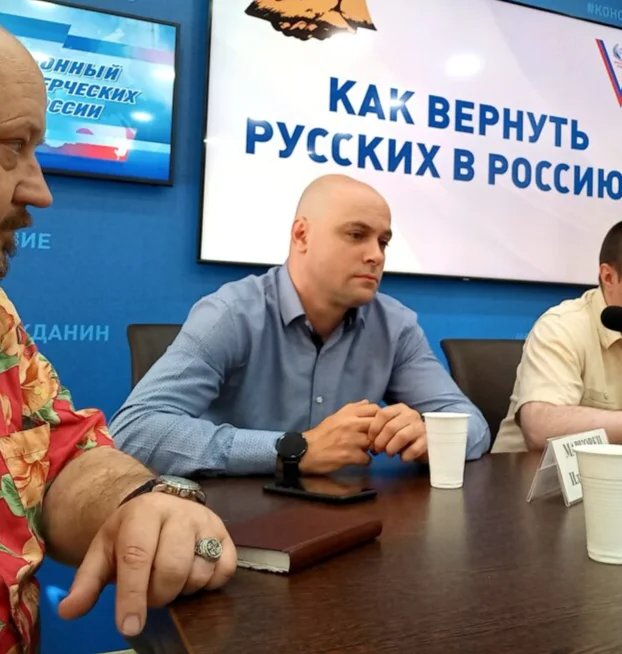
In the centre: Ilya Markovets. Photo: ejednevnik-farser.info
In Pskov, where the Chernigov native Ilya Markovets grew up, there is in fact a company registered in his name that offers private investigation services — its name is Brothers in arms. He also worked in the security service of the food retailer X5 Retail Group, and at least from the end of 2015 to date, Markovits has been working as specialist of the Modern Psychological Technologies School.
According to the School’s director Alexander Mimrin, Markovets is the head of the polygraph examiners group, his job is commercial polygraph tests.
“Markovets graduated from a military university, I have a lot of retired servicemen working here, I am one myself. He studied to become a polygraph examiner in Moscow’s Psychological Technologies University,” Mimrin told us over the phone. Mimrin himself used to work as senior lecturer of the Military University of the Ministry of Defence Psychological Department, and according to some reports, holds the rank of colonel. The school and its director were co-organisers of events for security forces officials.
Ilya Markovets’ brother Mikhail graduated from the Diplomatic Academy of the Ministry of Foreign Affairs and, until recently, worked as first secretary of the Third Department of the CIS countries. From 2014 to date, he has been collaborating with the organisation Right to Arms, founded by the State Duma deputy Maria Butina, in the capacity of a martial arts instructor. He has been mentioned as an instructor for the Krav Maga KMG Institute (translated from Hebrew — contact combat); the institute’s founder and director Alexey Kameneve, according to the organisation’s website, served in the 1st Special Purpose Unit of the Internal Forces Vityaz, is currently its active consultant and instructor, and he also serves as contact combat consultant and instructor for the Federal Protective Service, special units of the Defence Ministry, and the Ministry of Internal Affairs. Mikhail Markovets is currently conducting training sessions in the Practical Self-defence Centre.
But let us go back to the alleged suspect in the attack on Muratov Ilya Markovets. Some time ago, he also became the counsellor for Enrico Todua, the head of the board of the Russian Reserve Officers Union. In June, while in the capacity of the counsellor, he participated in the round table “How to bring Russians back to Russia?” organised in Moscow by a nationalist Alexander Bosyh.
We shall remind you that Bosyh is the person who, in May 2012, broke into Russian politics with his fists, by hitting a woman protesting near the Cathedral of Christ the Saviour in her temple. By that time, his achievements had included membership in the nationalist Congress of Russian Communities that had even submitted his candidature for the Presidential Council for Civil Society and Human Rights, membership in the Praesidium Bureau of the Rodina party, a municipal deputy term, and claiming that gays were “biological trash”. Currently, Bosyh’s posts are being reposted by that same Telegram channel that had been the first to post the video of the attack. Meanwhile, the nationalist puts the issue of Russian emigrants returning on the agenda. Markovets helps him do that: during the round table he said that emigrants are “Russian people in enemy territory”, those that come back should firstly be “identified by nationality”, he also proclaimed that he was ready to take part in a project of a “Russian civilisation” expansion into the North Kazakhstan. In his speech, he talked about the Orenburg region being a bridgehead — in the middle of the 2000s, he was registered in the military town Totskoye, in that exact region; he came back to the town afterwards, too.
The Russian Reserve Officers Union, which Markovets has connections to, is an organisation that actively collaborated with the “DPR” structures. Its head Enrico Todua graduated from the Donetsk Military Politics Higher School. He is still in contact with his alma mater, and regularly visits Donetsk. In 2020, Todua was taking graduation exams in the Donbas Law Academy. Currently, he helps collect equipment and munitions for the graduates that are planning to enter the combat on the “DPR” side.
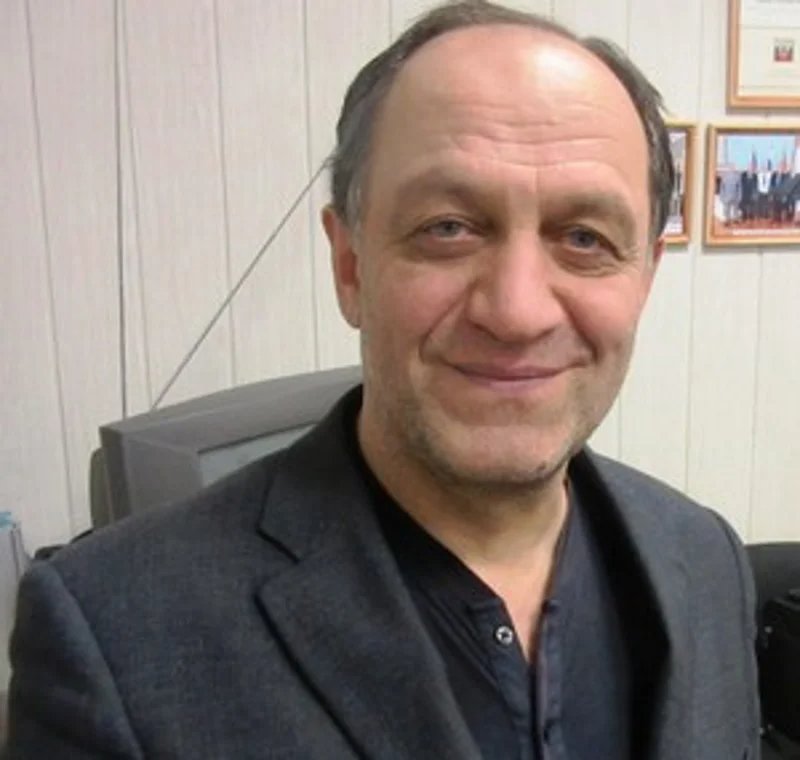
Enrico Todua. Photo: starodymov.ru
Todua is also an executive secretary of the School's union, an organisation of the graduates from different years. The union also actively participates in the life of the “DPR” and preparation of students for future combat. In the capacity of the head of the Russian Reserve Officers Union, two weeks before the start of the “special operation”, he signed an appeal from veteran organisations “in support of the Supreme Commander’s initiatives with the aim of ensuring prolonged security of our Homeland”.
The Reserve Officers Union does not limit itself to geopolitics — on its website, party organisation services are being offered. The text is accompanied by a photo of a certain canteen, which, obviously, is somehow connected to the registered to the same Moscow address Feeding Centre for reserve officers U generalov (Stopping by the generals’ place). The centre’s menu (the place is, unfortunately, now closed), if we judge by old Internet reviews, featured a meal called General’s ring — boiled sterlet, sauced with wine and decorated with red caviar, lemons, and olives.
The sword and the plough union
Todua’s last name is connected not only to armed forces but also to agriculture. Dmytro Todua, Enrico’s brother and another graduate of the Donetsk Military Politics School, is the director of a joint-stock company Ababkovskoye — an agriculture factory in the Nizhny Novgorod region, in the suburbs of the town Pavlovo. That is exactly where, according to our information, currently resides someone we know all too well — Nikolay Triphonov.
He has been working in agriculture for the past several years. At different points, he was listed as CEO, board member, and supervisory board member in three agricultural enterprises, all registered to the same address — the Moscow region village Fedino. In one of them, a joint-stock company Voskresenskoye, a Novaya correspondent was told that Triphonov had quit a couple of years ago, and that later on, the company had deleted the mentions of him from its website. Meanwhile, the Ababkovskoye website features a whole list of agriculture tech for sale; the tech belongs to the company Voskresenskoye.
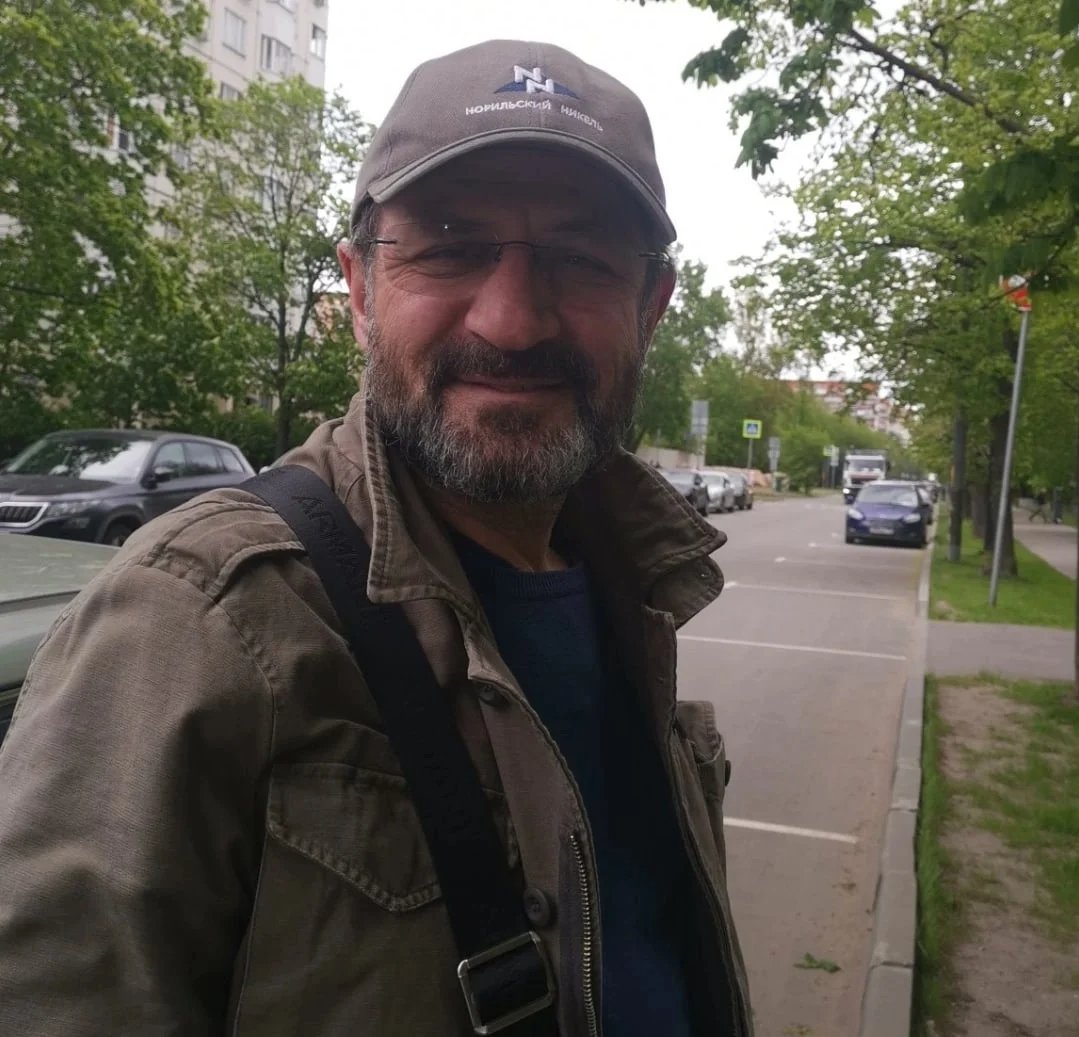
Dmytro Todua. Photo: VK
Currently, Triphonov is one of the supervisors of Pavlovo’s agriculture. A specialised Vkontakte (Russian social media — translator’s note) group has a post about looking for an agronomist, the post features Triphonov’s number for contact, meanwhile in the comments to the post the replies come from a profile used by Triphonov.
The Nizhny Novgorod region sources told us that Triphonov was the de-facto director of the company Ababkovskoye, even though he does not come in often. According to them, “golden” money is invested in this business — money connected to the jewellery business, meanwhile a certain Moscow benefactor is behind Triphonov’s success (you could choose to remember about Shchirov’s Moscow region jewellery company right about now, as a suggestion). This is not the only agriculture enterprise in the region with Triphonov’s fingertips on it — there is at least one more enterprise he is connected to. All in all, according to the hypothesis of our interlocutors, the veteran agriculture business is made up of a chain of interconnected structures.
We are also aware of an incident when a businessman was in a conflict with Triphonov’s company. The businessman was contacted by people who had said they were part of Moscow security forces and explained that the conflict had to be resolved peacefully.
The animal factory Ababkosckoye breeds red brokeback cows, the breed is considered to be disappearing. Agriculture business always means grants. According to the database SPARK, in 2020, the enterprise received almost 14 million rubles (€217,000) of government aid, in 2021 — almost 9 millions (€139,000). Despite that, the financial situation of Ababkovskoye is not very promising. A local newspaper reported that the company had recently “ended up at the edge of financial ruin”. The cause — debts and technological underdevelopment.
A year ago, Maxim Kalashnikov, an odious publicist who, back in 2009, proposed joining Ukraine with Russia while calling the neighbour country “Novorossiya”, appealed to his YouTube viewers, asking them to donate money to help his “friends and airborne forces soldiers” that had taken up a noble cause. The aforementioned debts may be the reason why. Kalashnikov is also connected to Kvachkov’s case. In 2016, Kalashnikov’s place was searched after he had published a blog with People’s Militia named after Minin and Pozharsky materials, which incited hatred towards Jews.
In his YouTube appeal, Kalashnikov asked for mere 100 million rubles (€1.5 million) for his “friends”. In exchange — a share of the business. The friends were not named, however, an email address for communication was published — the same one that Triphonov had used while working in the Voskresenskoye company.
A year later, Ababkovskoye has ended up on YouTube again — the video told the alleged story of the enterprise being captured by raiders, in the footage Dmytro Todua’s name is mentioned in the capacity of the injured party.
What really happened was: marshals came to arrest the property of the agrarians by a court order — the enterprise had not paid out its debt to several creditors. According to the participants of the events, it became possible to enter the enterprise’s territory only when special unit forces had arrived. Vladimir Esipovsky, lawyer of one of the creditors, told Novaya that his client has spent several months unsuccessfully trying to get a criminal case against the management of the Ababkovsoye opened — for not fulfilling the court order. He only receives negative responses from the police. What is the reason for law enforcement’s position? He can only guess.
…So, three months after the attack, we have — new detailed information on the people possibly connected to the attack that demonstrates they had connections with the special forces, as well as right and veteran organisations. We are now convinced that one cannot simply blame a fanatic's unpredictable excessive behaviour for a high-profile incident. It is also impossible to protect our employees and other people from similar or more serious attacks (lest we forget, the first publication of the video of the attack was accompanied by a promise to “come for every one of you”; recently, the same channel asked that politician Ilya Yashin was “dealt with without any trial”).
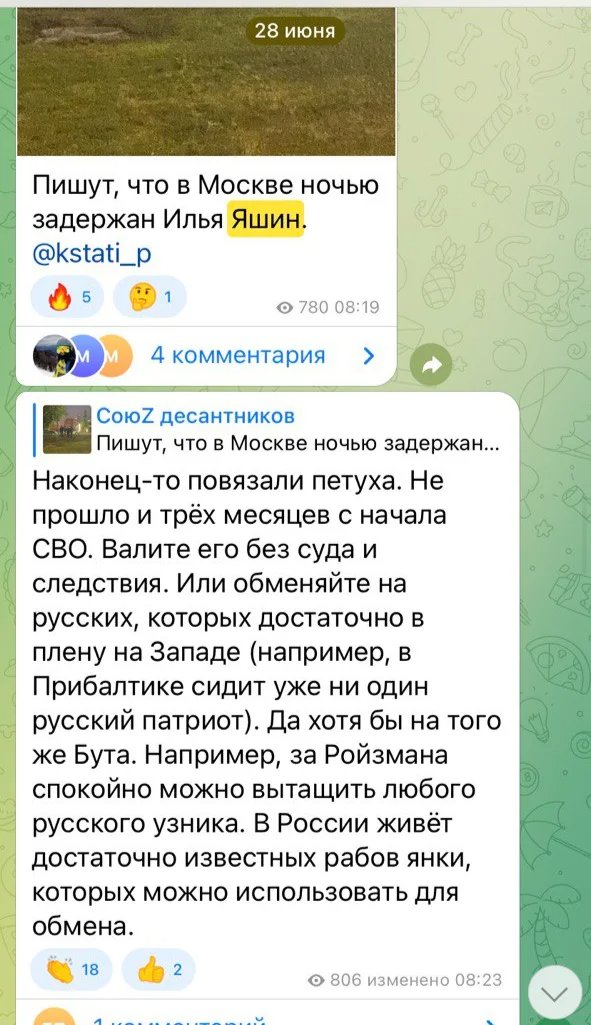
Screenshot from the Telegram Channel SoyuZ desantnikov
The message says: “Finally, he has been caught. Only three months have passed since the start of the Special Military Operation. Deal with him without any trial. Or exchange him for Russians, there are enough of them imprisoned in the West. <...> Enough of Yankees’ slaves live in Russia, they can be used for prisoner exchange.”
We are certain that the police, who are the appropriate authority for this case, will have the opportunity to verify both our version of events as well as any other version, and document them according to the procedures. However, since 7 April, we have not received information on a criminal case being opened, or the opposite. We have also sent a formal request to the Minister of Internal Affairs Vladimir Kolokoltsev but have not received an answer.
P.S.
We have contacted Nikolay Triphonov over the phone and asked him to comment on the information about his possible connection to the attack on Dmitry Muratov. “No, of course it wasn’t me,” he assured. “I also have no connection to the Airborne Forces Union.” He refused to share what he is doing currently; regarding the information on his connection with veteran organisations and the MSU Airborne Forces Union, he replied: “You are probably mistaken, that isn’t me.”
When asked by a Novaya correspondent over the phone if he had any possible connection to the crime, Ilya Markovets replied: “No comment” and hung up the phone.
Join us in rebuilding Novaya Gazeta Europe
The Russian government has banned independent media. We were forced to leave our country in order to keep doing our job, telling our readers about what is going on Russia, Ukraine and Europe.
We will continue fighting against warfare and dictatorship. We believe that freedom of speech is the most efficient antidote against tyranny. Support us financially to help us fight for peace and freedom.
By clicking the Support button, you agree to the processing of your personal data.
To cancel a regular donation, please write to [email protected]
